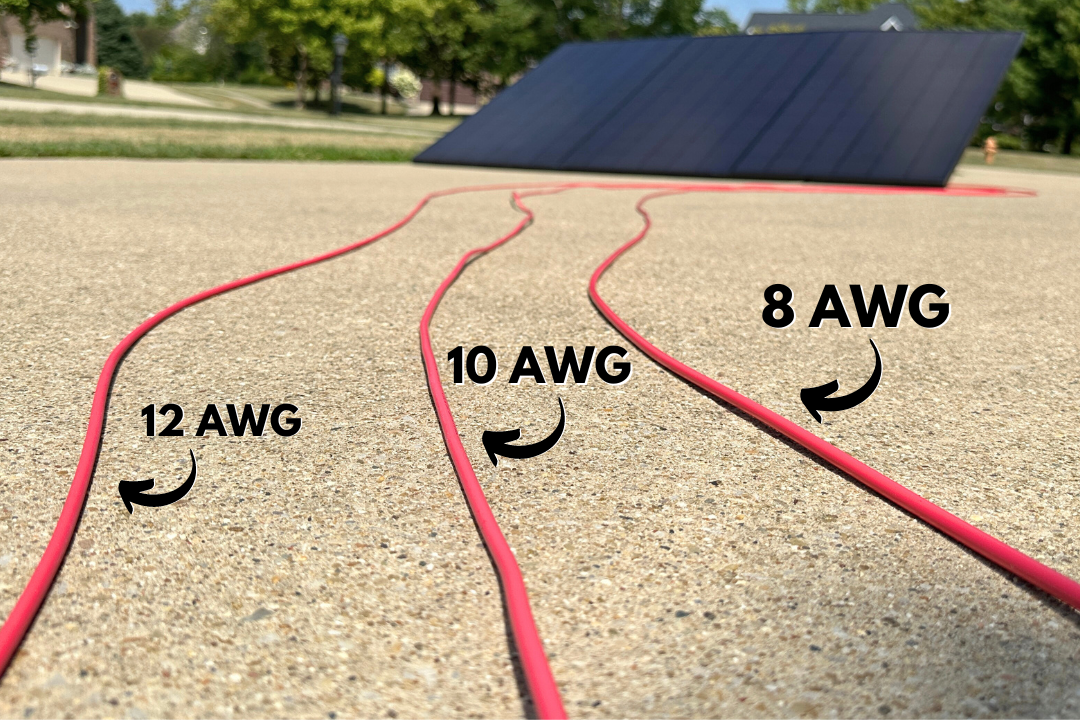When it comes to setting up solar, it’s the small details like choosing the right wire gauge that can make all the difference. So in my latest video on my YouTube channel, I rolled up my sleeves and put three different wire gauges for solar to the test to determine their impact on efficiency.
You can watch the video below or keep reading to learn about the same results.
The Wire Gauges I Tried Out
I decided to focus my testing on three main wire gauges for solar: 12 gauge, 10 gauge, and 8 gauge. I’d read about “line losses” – energy lost when it travels through wires. If you pick the wrong wire size for your solar setup, these losses can dramatically reduce its efficiency. While there’s no shortage of online calculators claiming to predict these losses, I wanted to see how these predictions stacked up against my real-world findings.

My Testing Setup
Here’s how I set things up:
- Weather Conditions: It was a mostly sunny day, though a few clouds drifted by now and then.
- Solar Panels: I used two Heliene 360-watt panels, connected in parallel (I discuss different ways of connecting in this blog post).
- Charge Controller: My MPP charge controller, the EcoFlow Delta Pro, in ideal conditions, was operating at around 40.5 volts and 8.9 amps per panel. Because of the parallel connection, the current floated between 16-17 amps or roughly 2 times the MPP panel current rating.
- Measurement Techniques: I relied on a power analyzer near the panels and one near the Ecoflow to track different parameters, with a focus on the Watt hours produced.
Predictions from Online Calculator vs. My Findings
Using the calculator on unboundsolar.com, I found the following predictions:
1. 12 Gauge: They predicted a 17.4% loss
2. 10 Gauge: They anticipated a 10.9% drop
3. 8 Gauge: They expected a 6.9% loss
Compare this to what I observed:
1. 12 Gauge: I recorded a 12% loss
2. 10 Gauge: I noticed a 6.3% drop
3. 8 Gauge: I expected a 4.4% drop, but it was even lower at 3.3%

What I Took Away From This
- Size Matters: From my tests, it became clear that the larger the gauge (with 8 being the largest I tested), the less energy you’ll lose.
- Theory vs. Reality: There’s often a gap between what online tools predict and what you’ll see in real-world conditions. However, they’re still pretty close and most likely driven by when the panels are producing less than the MPP-rated current.
- My Personal Choice: For setups like the one I have, an 8-gauge wire seems to be the best bet.
But remember, your specific circumstances, like the distance between panels, the kind of panels you use, and even the day’s weather can influence these numbers. Using tools like unboundsolar.com can offer more personalized insights for your setup.

Conclusion
From my experiment, I learned how crucial it is to select the right wire gauge. Small changes in wire sizes can lead to big differences in efficiency. In setups like mine, the 8-gauge wire is a clear winner. But if you’re considering scaling up and getting a professional installation, you might have to reconsider your choices.

